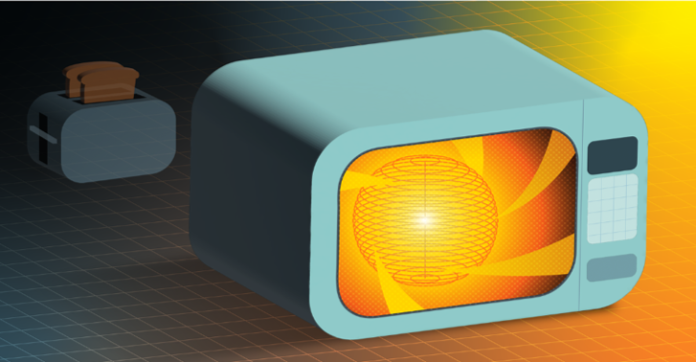Nuclear fusion energy is inching closer to reality. Work in Japan and at the Princeton University’s Plasma Physics Lab are not breakthroughs but represent interim steps in solving the complex technology barriers to fusion energy reactor development and deployment.
The potential to realize commercial nuclear fusion energy has been a receding target 30 years in the future for as long as I can remember. The promise for humanity of harnessing the power used by the sun and other stars here on Earth is seen as the ultimate clean energy solution. It would be revolutionary, zero polluting, with an almost unlimited supply of fuel based on plentiful hydrogen. Nuclear fusion energy if not deployed in a bomb is the dream for a clean, and safe energy future.
A Quick Chemistry Hydrogen Primer
To know nuclear fusion you need to remember the chemistry taught in high school. In Grade 11 we were introduced to the periodic table of elements plastered on the wall of the chemistry lab.
We learned that hydrogen with the symbol H is the first element in the periodic table with an atom that contains one electron circling a nucleus containing a single proton. H is the most abundant element in the Universe.
Isotopes of H include protium, H1, deuterium, H2 and tritium, H3. It is the latter two that are critical elements for nuclear fusion. H2 atoms contain one electron and a nucleus with one proton and one neutron. H3 atoms contain one electron and a nucleus containing a proton and two neutrons. The natural ratio of H1 to H2 and H3 is 99.98%/0.016%/<0.01%.
Fusing H2 and H3 at temperatures of over 100 million Celsius (212 million Fahrenheit) degrees produces an electrically charged gas called plasma which is a million times less dense than air and thus needs to be contained. That’s where the engineering behind commercial nuclear fusion comes in. The technology requirements are complex involving developing materials to confine the plasma in a containment vessel wrapped by powerful magnets and superconducting coils. High-powered lasers are used to target a pellet of D-T to initiate fusion.
What’s Happening At Kyoto Fusioneering
Kyoto Fusioneering Ltd. (KF) is one of several Japanese nuclear fusion startup companies working on components needed for fusion reactors. Earlier this year the company announced a partnership with Canada’s premier nuclear science research centre, the Canadian Nuclear Laboratories (CNL). The new venture Fusion Fuel Cycles Inc. (FFC), plans to develop and deploy deuterium-tritium (D-T) fusion fuel cycle technologies. KF is providing silicon carbide composite for tritium breeding blankets to up production of the hydrogen isotope. The target delivery date for the tritium processing facility is 2026.
Japan is looking to differentiate its industrial base which today tends to be largely dominated by automobile manufacturers and a supporting supply chain. KF is one of the companies that hopes to participate in an initiative established earlier this year called the Japan Fusion Energy Council or J-Fusion. It is designed to build synergies among many companies in the country with USD 6.2 billion available in investment capital. So far, KF’s share of the pot is $91 million.
Kiyoshi Seko, director and chief operating officer at KF notes that the growing threat of human-caused climate change requires greater urgency. He states, “We cannot wait 30 or 40 or 50 years to make fusion happen. We have to make it within at least 25 or 20.” In my opinion, even 20 years will be problematic considering our global continuing dependence on fossil fuels for the energy we consume and the pollution that results.
To frustrate environmentalists even further regarding nuclear energy as a climate mitigation energy solution, the fusion project called ITER, a joint venture involving the European Union, Japan and many other countries, and forever delayed, in the last week announced it won’t be until 2039 at the earliest before the reactor is operational and it isn’t even designed to be a commercial operating facility.
Let’s hope that J-Fusion can light a fire while other nascent fusion reactor designs come to market much sooner.
Princeton Lab Proposes Microwave-Sized Fusion Reactor
The Princeton Plasma Physics Laboratory (PPPL) is proposing a kitchen-sized nuclear fusion appliance a fraction of the size of ITER. States Masayuki Ono, one of the research physicists at PPPL, “A compact, spherical tokamak plasma looks like a cored apple with a relatively small core.”
The design eliminates massive heating coils needed for other reactor vessel designs. The idea is to aim microwaves at the tokamak that get generated from outside the container. The idea is to create an electron cyclotron current drive to heat the plasma using as little power as possible.
The PPPL team have written two programs, one called TORAY and the other TRANSP, to find the most efficient ways to direct the current and to avoid any of the power being put into the plasma from finding its way out.
The hope is to design the reactor and launch a pilot power plant. One senior technical advisor describes the design as “the future for tokamak heating systems.” Tokamaks are what the industry calls the reactor vessels being used in fusion experiments. They are doughnut-shaped. This one, however, is like a cored apple, taller and rounder than a doughnut. The Princeton physicists believe the cored apple may prove to be better.
In a press release from Princeton, no timelines are mentioned. So we wait and wait and wait…..









